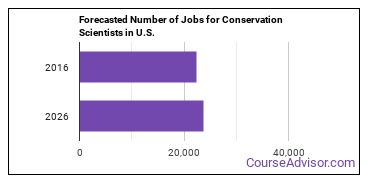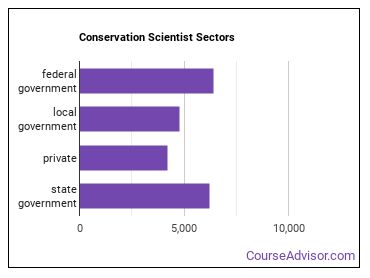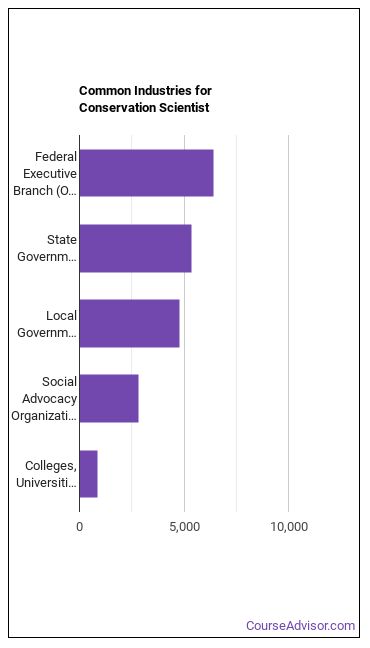What You Need to Know About Conservation Scientist
Job Description: Manage, improve, and protect natural resources to maximize their use without damaging the environment. May conduct soil surveys and develop plans to eliminate soil erosion or to protect rangelands. May instruct farmers, agricultural production managers, or ranchers in best ways to use crop rotation, contour plowing, or terracing to conserve soil and water; in the number and kind of livestock and forage plants best suited to particular ranges; and in range and farm improvements, such as fencing and reservoirs for stock watering.
Featured schools near , edit
Related Job Titles for this Occupation:
- Land Reclamation Specialist
- Range Scientist
- Grassland Conservationist
- Water Conservationist
- Range Ecologist
Job Outlook for Conservation Scientists
In 2016, there was an estimated number of 22,300 jobs in the United States for Conservation Scientist. New jobs are being produced at a rate of 6.3% which is above the national average. The Bureau of Labor Statistics predicts 1,400 new jobs for Conservation Scientist by 2026. There will be an estimated 2,000 positions for Conservation Scientist per year.

The states with the most job growth for Conservation Scientist are Colorado, New Hampshire, and Utah. Watch out if you plan on working in Rhode Island, New Mexico, or Maryland. These states have the worst job growth for this type of profession.
What is the Average Salary of a Conservation Scientist
Conservation Scientists make between $34,020 and $98,450 a year.

Conservation Scientists who work in Connecticut, Alaska, or New Jersey, make the highest salaries.
How much do Conservation Scientists make in different U.S. states?
| State | Annual Mean Salary |
|---|---|
| Alabama | $59,310 |
| Alaska | $93,390 |
| Arizona | $71,190 |
| Arkansas | $70,630 |
| California | $75,980 |
| Colorado | $71,170 |
| Connecticut | $87,710 |
| Delaware | $55,300 |
| Florida | $40,620 |
| Georgia | $69,390 |
| Hawaii | $68,360 |
| Idaho | $66,510 |
| Illinois | $63,840 |
| Indiana | $63,320 |
| Iowa | $56,820 |
| Kansas | $68,910 |
| Kentucky | $67,440 |
| Louisiana | $61,430 |
| Maine | $61,970 |
| Maryland | $79,070 |
| Massachusetts | $72,200 |
| Michigan | $63,460 |
| Minnesota | $72,650 |
| Mississippi | $54,870 |
| Missouri | $57,580 |
| Montana | $64,480 |
| Nebraska | $65,300 |
| Nevada | $61,670 |
| New Hampshire | $72,160 |
| New Jersey | $85,360 |
| New Mexico | $68,710 |
| North Carolina | $61,780 |
| North Dakota | $64,900 |
| Ohio | $55,550 |
| Oklahoma | $64,330 |
| Oregon | $76,790 |
| Pennsylvania | $55,200 |
| South Carolina | $56,220 |
| South Dakota | $62,390 |
| Tennessee | $68,440 |
| Texas | $57,990 |
| Utah | $63,720 |
| Vermont | $55,150 |
| Virginia | $75,370 |
| Washington | $65,120 |
| West Virginia | $50,210 |
| Wisconsin | $65,610 |
| Wyoming | $71,180 |
Who Employs Conservation Scientists?

Below are examples of industries where Conservation Scientists work:

References:
More about our data sources and methodologies.
Featured Schools
 Request Info
Request Info
|
Southern New Hampshire University You have goals. Southern New Hampshire University can help you get there. Whether you need a bachelor's degree to get into a career or want a master's degree to move up in your current career, SNHU has an online program for you. Find your degree from over 200 online programs. Learn More > |
